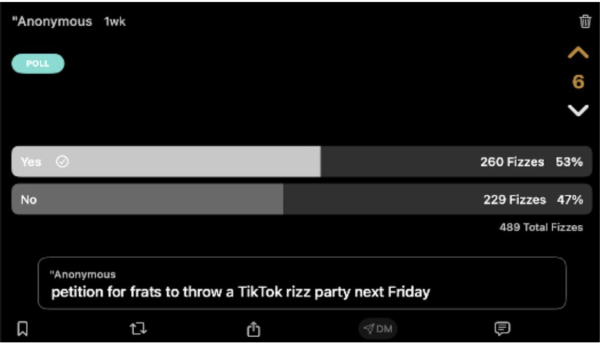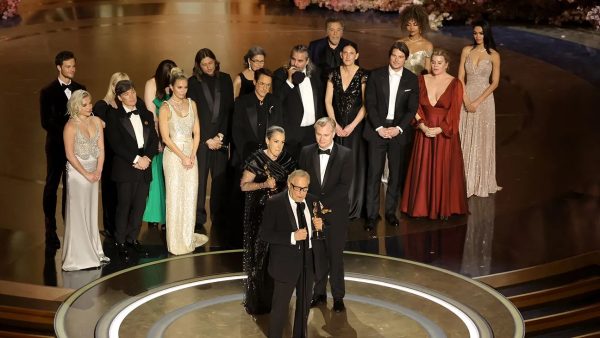A true crime triumph: the Adnan Syed story
Notable podcast, ‘Serial’, leads to exoneration
Courtesy of the Innocence Project
Adnan Syed walks free after the District Attorney dismisses the charges against him.
October 20, 2022
“If you want to figure out this case with me, now is the time to start paying attention”, Sarah Koenig says as she draws in her audience during the fourth episode of her critically acclaimed podcast “Serial”. The podcast’s first season recounts the details of the case of Hae Min Lee — Adnan Syed’s alleged murder victim — taking the audience from beginning to end with testimonies from the court, interviews with Syed and other important personnel and vital sources such as police reports. The podcast is one of the first to cover this case in meticulous detail — 15 years after Syed was incarcerated.
Syed was convicted of murdering his girlfriend Hae Min Lee when he was in high school and has never stopped claiming his innocence despite his conviction. He pushed for a retrial which was denied a few years ago but has continued fighting since then with little success until now.
Simultaneously, the true crime genre is growing increasingly popular among teens and older audiences. It gives audiences the feeling of being a detective and uncovering the truth piece by piece as if they themselves are working on the case. Taking such a large audience through the evidence of these crimes makes the general public feel as though they have concluded that the individual is guilty.
“Serial”, however, shows a different story — within the first few minutes of the first episode, Koenig states that there is little to no incriminating evidence and spends the majority of the podcast discussing his trial. While she hints at his innocence, she also discloses that she cannot definitively conclude either way. This new attempt to prove innocence rather than guilt is a breath of fresh air, catching the attention of the general public with its uncommon format. Instead of searching for damning evidence like the detectives, they are able to find the clues that prove Syed was just a regular high school student. This change enraptured the audience by flipping the typical narrative and empowering them to feel like justice warriors — later pushing for a retrial to prove Syed’s innocence.
With enough public concern for cases such as Syed’s, the public has demonstrated its ability to influence the justice system.
With all this new attention on a so-called closed case, things began to change. New questions emerged about the legitimacy of conducting a retrial or dropping all charges. Koenig highlights the case’s mishandling by prosecutors and the defense — concerning other suspects – which turned heads. Fresh eyes on the case resulted in Syed’s release on Monday, Sept. 19, 2022 — 22 years since his conviction — and charges against Syed have since been dropped.
The community of true crime fans enthralled by the HBO docu-series and “Serial” podcast rallied behind Syed, which eventually lead to a retrial in 2016. During the retrial, the presentation of new evidence and ruling in his favor led to later success in the court of appeals. The progress of this case excited fans only to lead to a disappointing rejection by the Supreme Court. Syed’s fanbase pushed on, however, leading to his ultimate release.
Koenig, other podcasts and the HBO show were able to rile up enough of the general public to instigate the dropping of his charges. The power the media holds on the general public can be frightening as it can move a large audience to act in a way that shifts generational perspectives and calls to action a mass of people. Due to the accessibility of the podcast and social media, the news about Syed spread quickly, causing instant pushback on his original ruling. Because of the ease of spreading information and misinformation, the media can warp details and mislead the public who can be easily convinced that what they read is true. These skewed judgments can cause harm, especially when dealing with convicts. Without the correct facts, those pushing for justice may fight to free others believing they were wrongfully convicted while armed with misinformation. Syed’s case shows the impressive potential of the media to declare justice, but it also illuminates the potential danger of such rapid conclusions to which the public may jump.
Syed’s story sets a precedent for future cases. With enough public concern for cases such as Syed’s, the public has demonstrated its ability to influence the justice system. While popular trials such as the Johnny Depp and Amber Heard case earlier this year and the OJ Simpson case were widely known during the trial itself — allowing people to make real-time speculations and judgments — Syed’s case was different. Audiences began to fight for justice for Syed long after his conviction and were able to persuade the court to retry him in an attempt to prove his believed innocence. The success of his retrial could inspire future efforts from the media in advocacy for those who have been wrongfully convicted. With a newfound power in true crime media and its supporters, Syed’s case has the potential to inspire a new approach to justice for future generations.























Kevin • Oct 21, 2022 at 1:25 pm
Very well-written and engaging article. Caroline makes excellent points about how the true crime genre can have a significant influence and she explains key points of Adnan Syed’s story and the events leading up to his release in a very entertaining and informative way. Amazing job by Caroline Mederos